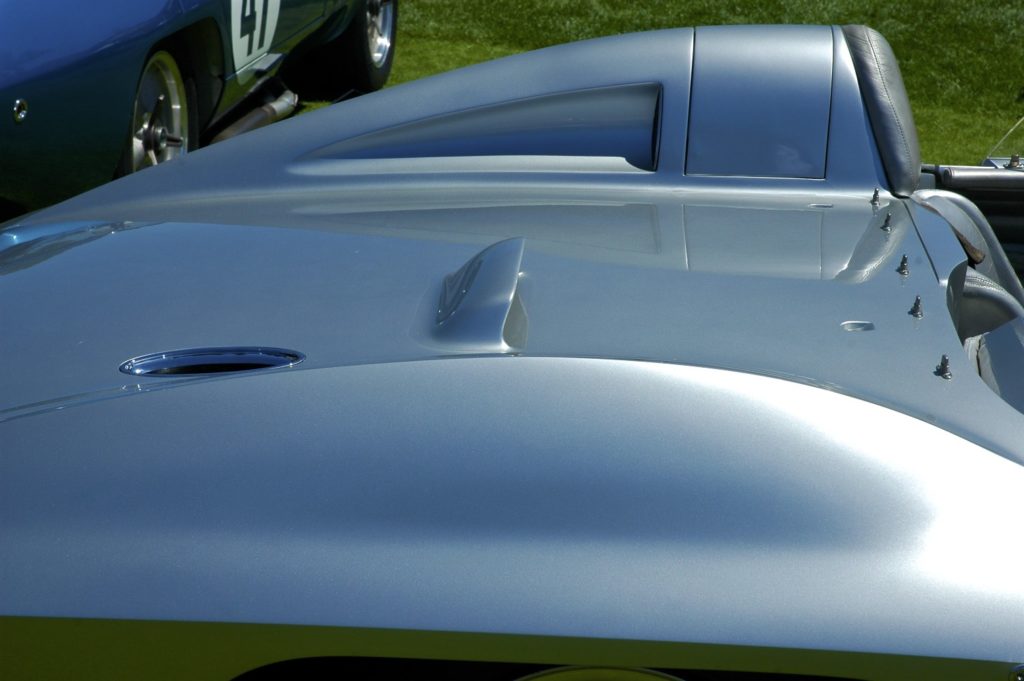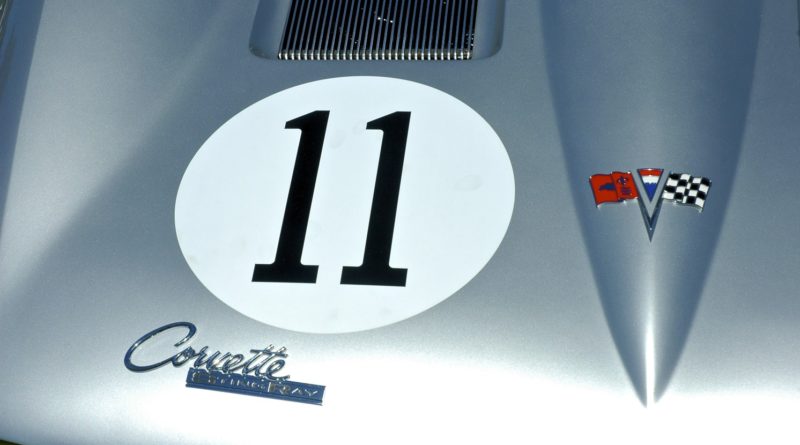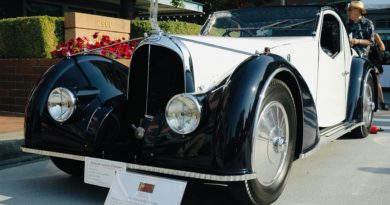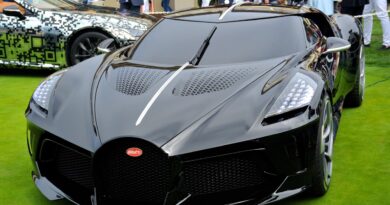The 1959 Corvette Sting Ray Racer
Last week’s BAT cars are a perfect segue to the forerunner of possibly the most sought after Corvette ever, and lend credence to Voltaire’s old adage that “there’s nothing new under the sun.” Peter Brock was just 20 when his 1957 concept sketches were credited with inspiring the design of this racer that foreshadowed production of the 1963 split-window Corvette. We spoke to Peter for some length at the 2013 Rolex Monterey Motorsports Reunion, where he was promoting his then-new book, “Corvette Sting Ray: Genesis of an American Icon.” Working for GM VP of Design Bill Mitchell, who was a long term protege of just-retired Harley Earl, Brock was part of this clandestine project begun in ’57. The original sketch was a coupe, but when Mitchell acquired the SS Corvette mule chassis that had raced at Sebring in ‘57 he decided to build a secret prototype that would be funded and privately raced by him. To minimize cost a roadster version was chosen.
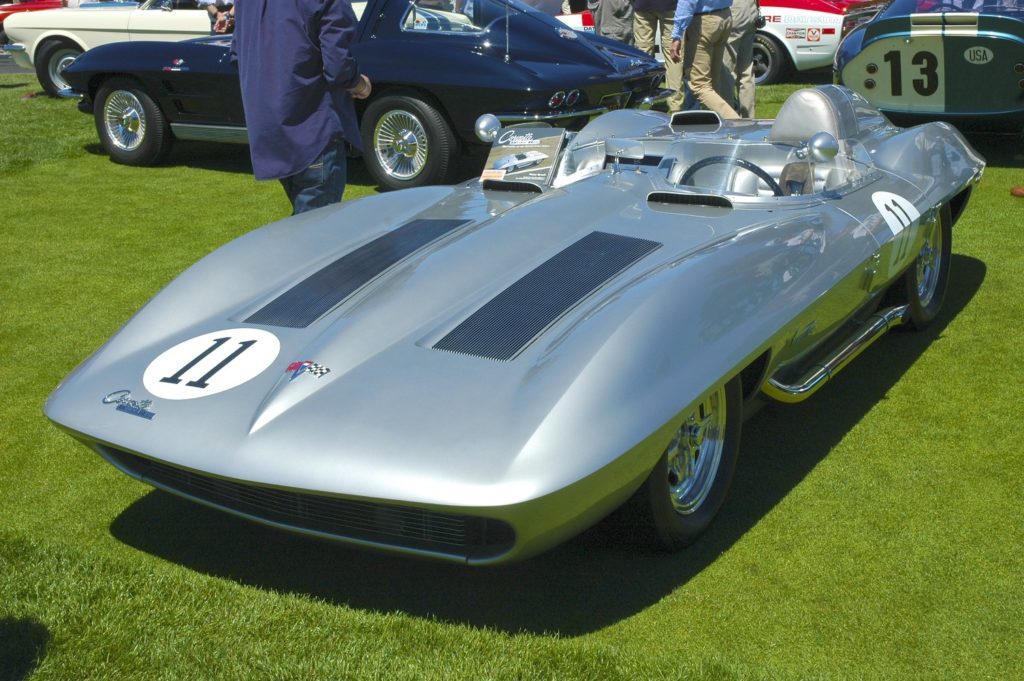
The SS Corvette was a follow up to the SR-2 racer Harley Earl had created for his son, Jerry. Seems Jerry had wanted to go racing with a Ferrari, and Harley wasn’t going to let that happen. Building two SS tube frames, one got the loving attention of a full magnesium body and 307HP 283 V8, while the mule got a less powerful engine and heavier fiberglass clothes. With engineer Zora Arkus-Duntov’s development version of an ABS concept, the mule still managed to qualify in the front row at Sebring. The magnesium beauty, weighing only 1,850 lb. and blazingly fast with a 183 MPH top speed at Sebring, took its place at the start. In a disappointing showing it lasted only 23 laps and became the last GM entry at Sebring for several years.
The Sting Ray story goes on from there. After an AMA ban on race car programs, the SS cars were retired. Mitchell then purchased the SS mule chassis for the princely sum of one dollar, and his race car project now had legs. It was secreted away in a studio called the “hammer room,” because it was hidden behind the wall of a tool room. There, Larry Shinoda and Tony Lapine finished detailing the full scale model.
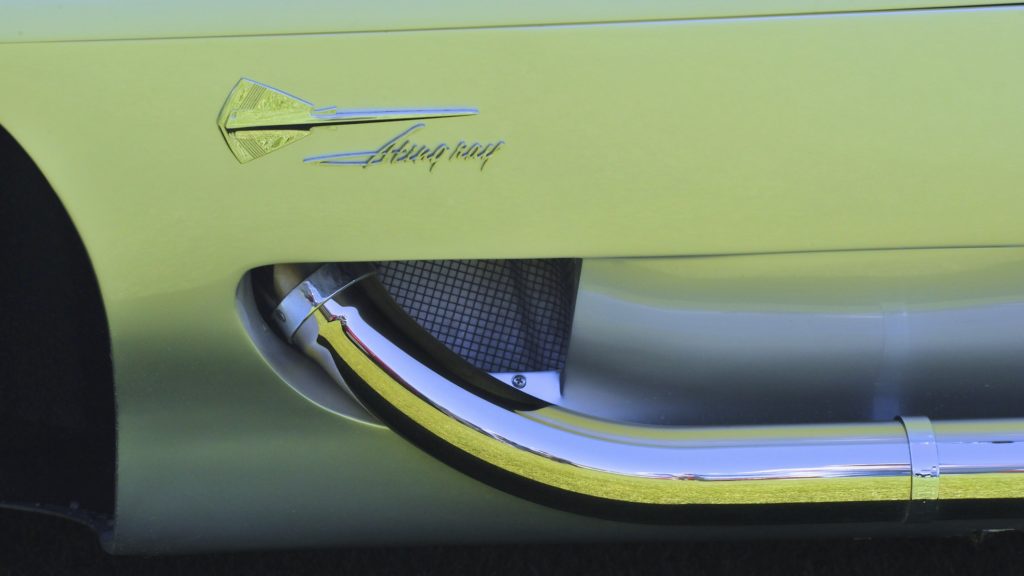
The racing was indeed also sponsored by Bill Mitchell, and in 1960 Dick Thompson even drove it to a SCCA National Championship. After that, Mitchell added the passenger seat along with a few modifications, including Corvette emblems, and exhibited it as a show car even though he continued to drive it regularly on weekends! After a year of shows, Mitchell further refined the car by adding disc brakes and a 427 engine.
The car is pictured here at The Quail, A Motorsport Gathering, in Carmel, CA during Pebble Beach Car Week in 2013. GM toured the car to various shows that summer to celebrate the 50th anniversary of the Sting Ray name. But what about Peter Brock?
Peter’s journey into the realm of automotive design is an interesting one, and shows his immense talent. As a California teenager, Brock had heard of an auto design college in Pasadena. So, one day decided to go for a visit. Now, the Art Center College of Design is no run of the mill school – it happens to be one of the three most prestigious design schools in the world. I visited Art Center and my sister graduated from there. It is a very impressive place. So, here we have Peter just popping by to find one must do more than simply express an interest – one must have a professional portfolio! Peter, undaunted, simply returned to his car and sketched hot rods for a couple of hours. He then walked back in and showed his drawings, whereupon he was admitted to this top design school! I chuckled to hear that because my sister had done something very similar.
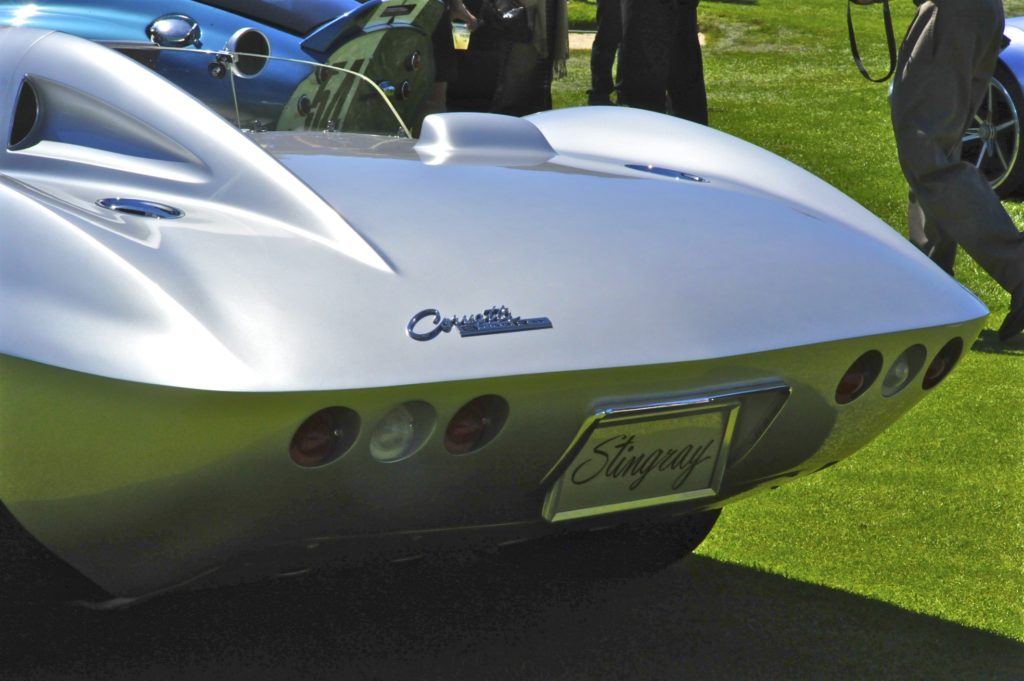
After a year at the expensive Art Center Brock was running out of money. So he called GM designer Chuck Jordan, who had been out to Art Center some months before scouting for talent. Jordan immediately offered Brock a job at GM’s famous Styling Section in the new GM Technical Center. At 19, Peter Brock had just become GM’s youngest-ever designer.
By the fall of ’57, Brock was working on Bill Mitchell’s design challenge. Mitchell had returned from the Turin Auto Show with pictures of the latest Italian concepts along with ideas of the design direction he wanted for a new Corvette.
Brock and three other junior designers set to work on advanced concepts in Research Studio B, a little used room under the the main studio floor. In November Mitchell visited the group again, and picked Brock’s now famous design as the concept they were going to pursue, not only for the 1960 (it actually ended up being the ’63) Corvette, but also a race car to showcase the new styling.
At the time, however, race car projects were verboten at GM because of a recent Automobile Manufacturers Association ban on racing. Not to be undone, Mitchell set the program up in secret and financed the whole thing out of his own pocket.
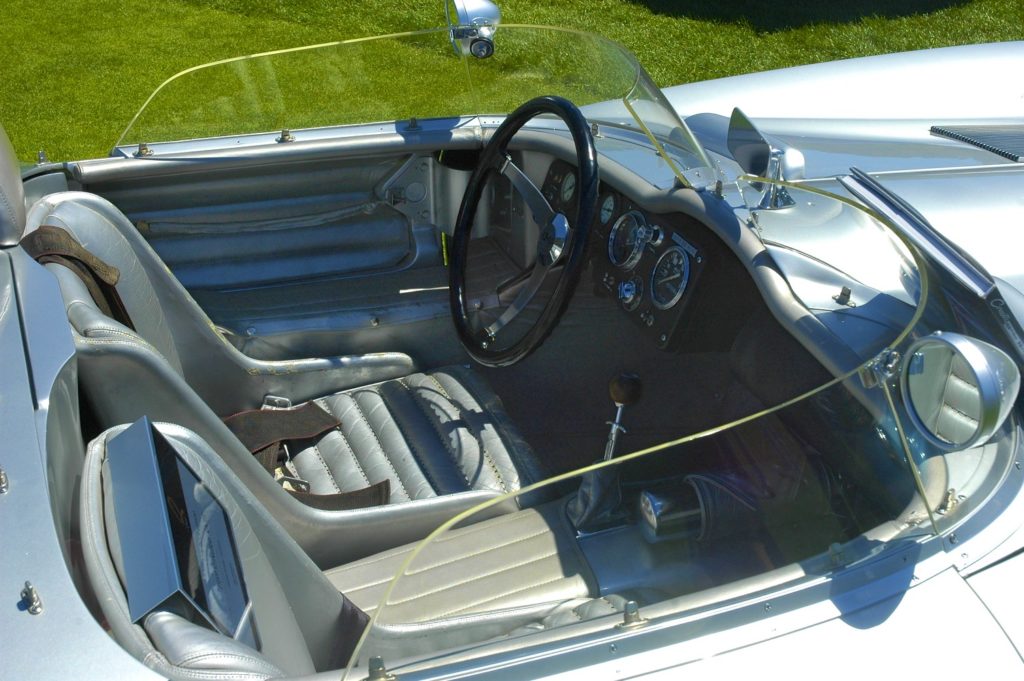
The design of the ’63 ‘Vette was also interesting. The split-window was a source of several screaming matches (including the hurling of personal insults) between Mitchell, who wanted it, and Duntov, who thought it was a terrible idea because of poor rear vision. Brock had also unsuccessfully tried to convince Mitchell of the aerodynamic importance of dipping the front end down and the rear flare up. Of course, Mitchell won that battle, too, but Brock was proven correct on the race track when the car became unstable at speeds over 150 MPH.
Brock left GM in ’58 to pursue racing with modest success. In ’61, he was hired by Carroll Shelby to run his racing school. There he designed the Cobra Daytona Coupe and later started his own Brock Racing Enterprises. Among others, he helped Datsun with success in Trans-Am. After that, he began designing hang gliders! These days he is still involved in automotive design, writing and photography.
